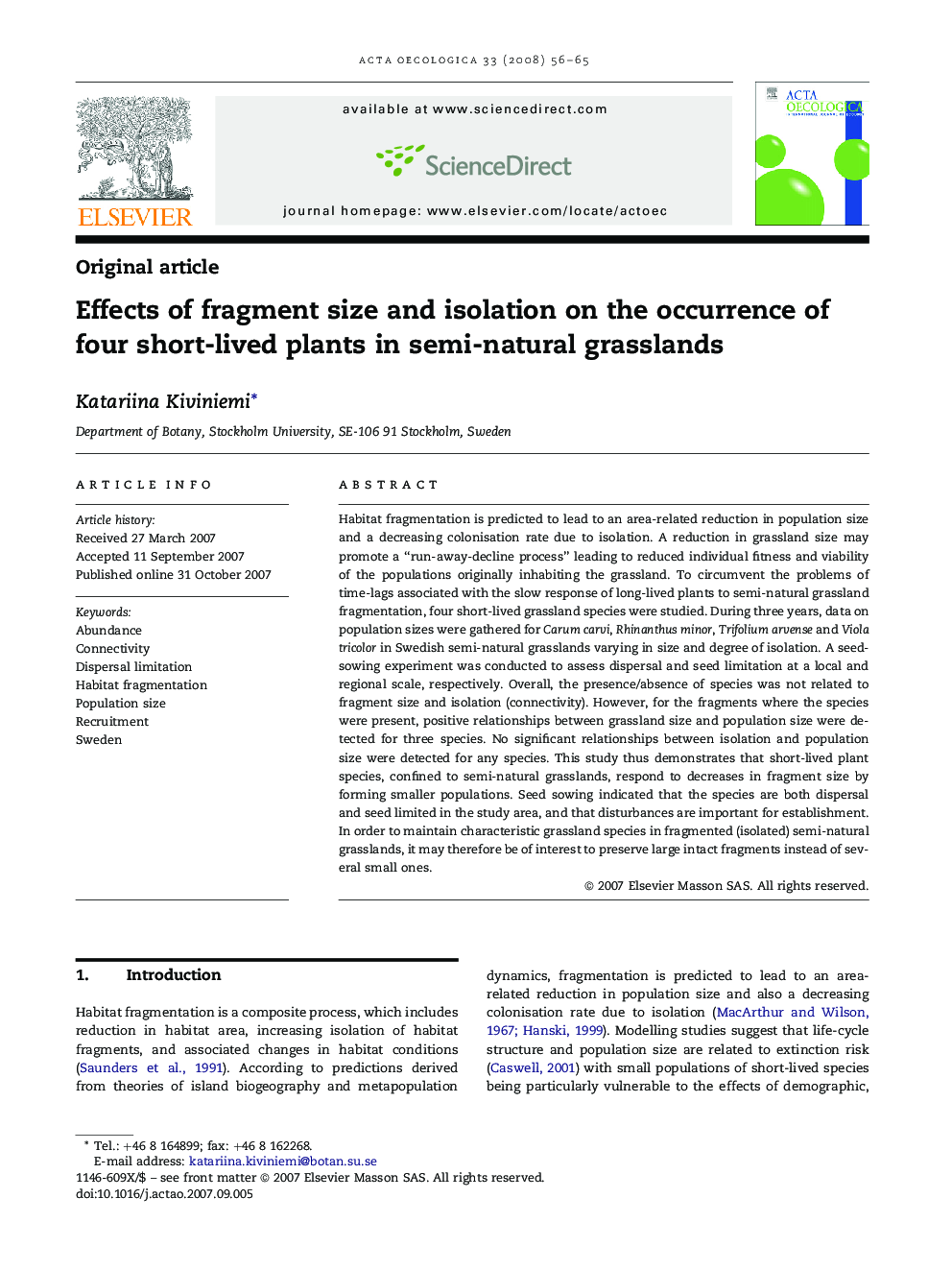| Article ID | Journal | Published Year | Pages | File Type |
|---|---|---|---|---|
| 4381160 | Acta Oecologica | 2008 | 10 Pages |
Abstract
Habitat fragmentation is predicted to lead to an area-related reduction in population size and a decreasing colonisation rate due to isolation. A reduction in grassland size may promote a “run-away-decline process” leading to reduced individual fitness and viability of the populations originally inhabiting the grassland. To circumvent the problems of time-lags associated with the slow response of long-lived plants to semi-natural grassland fragmentation, four short-lived grassland species were studied. During three years, data on population sizes were gathered for Carum carvi, Rhinanthus minor, Trifolium arvense and Viola tricolor in Swedish semi-natural grasslands varying in size and degree of isolation. A seed-sowing experiment was conducted to assess dispersal and seed limitation at a local and regional scale, respectively. Overall, the presence/absence of species was not related to fragment size and isolation (connectivity). However, for the fragments where the species were present, positive relationships between grassland size and population size were detected for three species. No significant relationships between isolation and population size were detected for any species. This study thus demonstrates that short-lived plant species, confined to semi-natural grasslands, respond to decreases in fragment size by forming smaller populations. Seed sowing indicated that the species are both dispersal and seed limited in the study area, and that disturbances are important for establishment. In order to maintain characteristic grassland species in fragmented (isolated) semi-natural grasslands, it may therefore be of interest to preserve large intact fragments instead of several small ones.
Keywords
Related Topics
Life Sciences
Agricultural and Biological Sciences
Ecology, Evolution, Behavior and Systematics
Authors
Katariina Kiviniemi,
